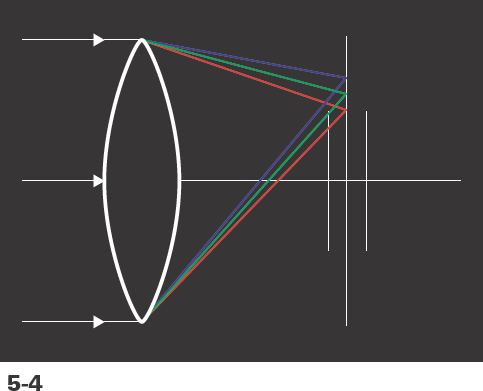5.3. CHROMATIC ABERRATION
While not very common with Canon's current, superior lens technology, some lenses, such as very wide-angle and long telephoto lenses, can occasionally suffer from an effect known as chromatic aberration, or color fringing. This is when the lens elements do not converge the colors of refracted light precisely onto the focal plane (see figure 5-4), which acts a little like a prism. The light then is dispersed instead of converged, resulting in misplaced colors in your image. For example, you might see a light area of magenta, green, or red alongside a person's face, or you might see a light area of color along the side of a building — especially at the periphery of the image. The effect can also cause an image to look soft or blurry, which is the result of contrasting areas of color being dispersed and converging incorrectly. Color fringing is least likely to occur at the center of the photo.
Figure 5-4. Chromatic aberration is caused by poor-quality optical elements that refract light inaccurately onto the focal plane. plane — some are focused before it, while others are right on it, and others are focused beyond it. The result is that some colors are absent or incorrectly presented in your image.

There are two types of chromatic aberration: lateral and longitudinal. The lateral type (also known as transverse), which is the most common type, manifests ...
Get Canon® EOS Digital Photography Photo Workshop now with the O’Reilly learning platform.
O’Reilly members experience books, live events, courses curated by job role, and more from O’Reilly and nearly 200 top publishers.

